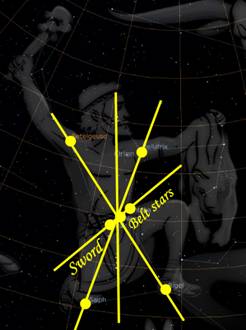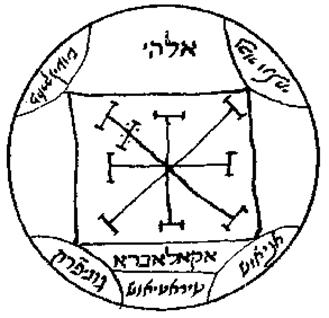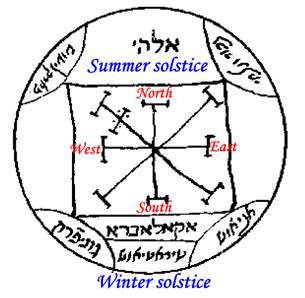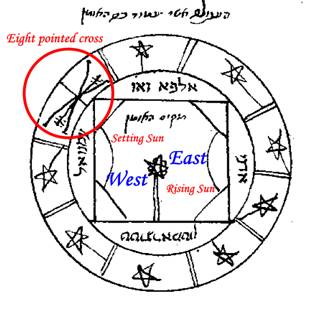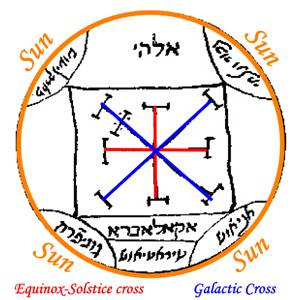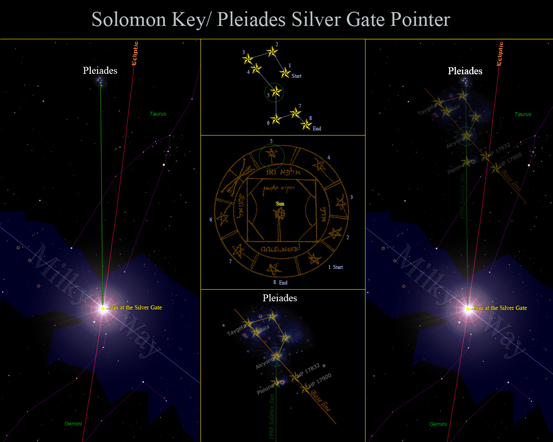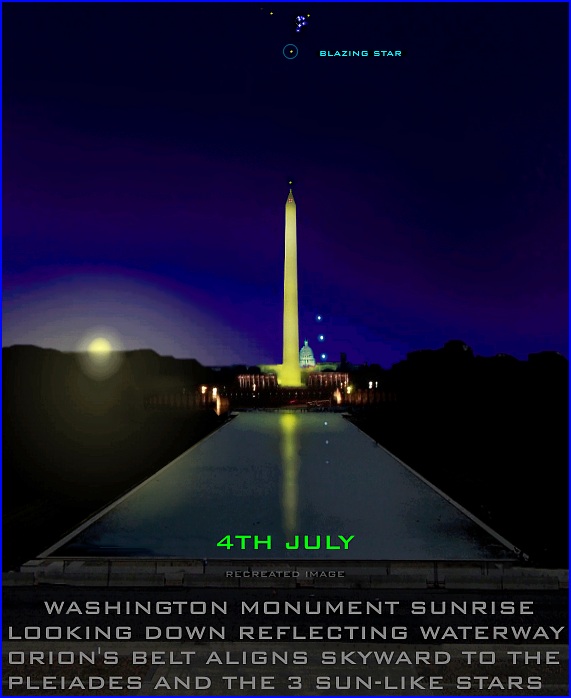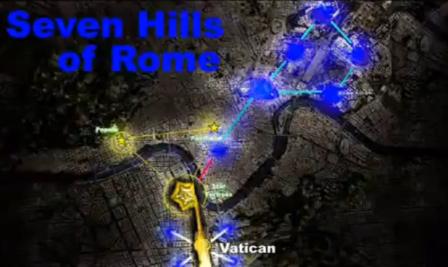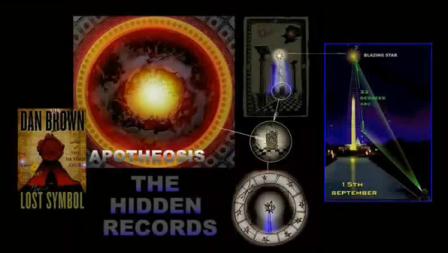|
Rispondi |
Messaggio 1 di 312 di questo argomento |
|
|
|
|
|
Rispondi |
Messaggio 178 di 312 di questo argomento |
|
|
|
|
Rispondi |
Messaggio 179 di 312 di questo argomento |
|
La llave menor de Salomón
De Wikipedia, la enciclopedia libre
El Lemegeton Clavicula Salomonis (en español, La llave menor de Salomón), también conocido como Lemegeton, es un grimorio anónimo del siglo XVII, y uno de los libros de demonología judeo-cristiana más populares.
Lemegeton Clavicula Salomonis se ha traducido tradicionalmente al español como La llave menor de Salomón, aunque 'lemegeton' no tiene ningún significado conocido en latín clásico o medieval, y probablemente sea una palabra usada por el autor, mal conocedor de latín, para decir 'menor'. De hecho, clavicula ya es una palabra latina que quiere decir llave pequeña o llave menor. Este nombre hace referencia al libro Clavis Salomonis (La Llave de Salomón), un grimorio de los siglos XIV o XV, erróneamente atribuido al rey Salomón.
Origen y autoría[editar]
Aunque las primeras referencias conocidas al libro son del siglo XVII, muchos de sus textos datan del siglo XVI (como el Pseudomonarchia daemonum de Johann Weyer) y de la baja Edad Media (parte del material de la primera sección, acerca de la invocación de demonios, es del siglo XIV o anterior). Se cree además que otras partes se inspiran en libros cabalísticos y del misticismo musulmán. El texto, por su parte, proclama haber sido escrito por el rey Salomón, aunque esto es altamente improbable. Los títulos de nobleza asignados a los demonios y las alabanzas a Jesús o a la Santísima Trinidad que aparecen en el texto son, por descontado, muy posteriores.
Versiones modernas[editar]
En la actualidad existen numerosas versiones modernas que pueden ser encontradas impresas o en Internet. Un ejemplo es la traducción "revisada" (alterada) realizadas en 1904 por Samuel Mathers y editada por Aleister Crowley, que fue usada en su tiempo como manual de instrucciones para invocar a los espíritus mencionados en el libro. Estas versiones se diferencian entre sí en los detalles y en los nombres de los espíritus.
La llave menor de Salomón contiene detalladas descripciones de espíritus, así como los conjuros necesarios para invocarles y obligarles a cumplir la voluntad del conjurador (llamado en el libro exorcista). También se explican en detalle las acciones previas a la invocación, tanto la fabricación de los elementos que se emplearán en el ritual (amuletos, círculos, signos, sellos), como los rituales necesarios para evitar que los espíritus tomen el control y otros rituales de protección
La tradición del poder de Salomón sobre los espíritus aparece también en otras culturas del Oriente Próximo y Medio. Ejemplo de ello es el libro Las mil y una noches, recopilación de cuentos del ámbito árabe-musulmán en la que se indica que Sulaymán (Salomón), hijo de Daud (David), es considerado Señor de los Ifrit (genios poderosos del folclore árabe). También se dice que castigó a los ifrit rebeldes que se negaron a someterse a su obediencia encerrándolos en jarrones tapados con un sello de plomo en el que figura impreso el nombre de Alá. En estos jarrones se inspiran probablemente las "lámparas maravillosas" de la cultura popular moderna.
El libro se divide en cinco partes, que constituyen tratados sobre diferentes materias: Ars Goetia (demonología e invocación de demonios), Ars Theurgia Goetia (clasificación de espíritus aéreos y su invocación), Ars Paulina (angelología e invocación de ángeles), Ars Armadel (construcción de un almadel) y Ars Notoria (rezos mágicos).

El círculo y el triángulo son usados en la invocación de los 72 espíritus del Ars Goetia: el practicante debe permanecer en el círculo, mientras que se cree que el espíritu invocación aparecerá dentro del triángulo.
La primera sección, llamada Ars Goetia (en latín medieval, el arte de la goecia, que significa brujería -del griego γοητεία, goēteia-) contiene las descripciones de los 72 demonios que se dice que Salomón invocó, encerró en vasijas de bronce selladas mediante símbolos mágicos y obligó a trabajar para él. El libro asigna un rango y un título de nobleza a los miembros de la jerarquía infernal, y un signo "al que deben lealtad" (más conocido como sello). Además, esta parte enseña a construir una vasija similar a las de Salomón y a usar las fórmulas mágicas para llamar a estos demonios de forma segura.
Una edición inglesa revisada del Ars Goetia fue publicada en 1904 por el ocultista Aleister Crowley. Crowley la usó como pieza clave de su popular e influyente sistema de práctica de la magia.
Los 72 demonios[editar]
La lista de entidades en el Ars Goetia se corresponde (en mayor o menor grado dependiendo de la edición) a la del Pseudomonarchia daemonum del demonólogo Johann Weyer, un apéndice de las últimas ediciones de su De praestigiis daemonum, de 1563, aunque difiere en cuanto a número y rangos. Como resultado de muchas traducciones, existen pronunciaciones diferentes para algunos de los nombres. La lista de demonios es la siguiente:
Ars Theurgia Goetia[editar]
El segundo libro de La llave menor de Salomón es Ars Theurgia Goetia (en latín medieval, el arte de la teúrgia goética, siendo la teúrgia la invocación de espíritus no demoníacos). Este libro explica los nombres, características y sellos de los 31 espíritus aéreos de los puntos cardinales (jefes, emperadores, reyes y príncipes) que el Rey Salomón invocó y encerró, así como su naturaleza (que puede ser buena o mala), sus sirvientes, las protecciones contra ellos y los rituales para invocación. Su invocación y control permiten -en teoría- descubrir cosas ocultas, como los secretos de las personas, u obtener, llevar o fabricar cualquier objeto que el conjurador les indique. Siguen un orden complejo en el libro, y sus nombres varían según la traducción. Los nombres de este libro, así como los del libro siguiente, el Ars Paulina, se corresponden con los de una lista aparecida en el libro Steganographia, de Johannes Trithemius (1500).
Ars Paulina[editar]
Es la tercera parte del Lemegeton Clavicula Salomonis, que es conocida desde la Edad Media. Según la leyenda, la Ars Paulina (en latín medieval, el arte de Pablo) fue descubierta por el apóstol San Pablo, pero en el libro es mencionado como "el arte paulino del rey Salomón". Esta dividido a su vez en dos partes: el primer capítulo trata de los ángeles de cada una de las horas del día, sus sellos, su naturaleza, sus sirvientes (llamados duques), su relación con cada uno de los siete planetas conocidos antiguamente, los aspectos astrológicos de su invocación, sus nombres (dos de ellos iguales a los de dos demonios del Ars Goetia) y sus rituales de invocación; el segundo capítulo trata de los ángeles que gobiernan cada uno de los signos zodiacales y cada grado de cada signo (hay 30º en cada signo), su relación con los cuatro elementos (aire, agua, fuego y tierra), sus nombres y sus sellos. El libro los llama "ángeles del hombre", ya que todas las personas nacen bajo un signo zodiacal, con el sol en un grado concreto de ellos.
Ars Almadel[editar]
El Ars Almadel (en latín medieval, el arte del almadel") se explica cómo hacer el almadel, una tablilla de cera con sellos protectores, en la que colocan cuatro velas. El libro explica los colores, materiales y rituales necesarios para la construcción del almadel y las velas. También dice qué ángeles pueden ser invocados y cómo invocarlos, y explica que sólo se les puede pedir cosas razonables y justas. Menciona a doce príncipes que gobiernan con ellos. Las fechas y los aspectos astrológicos más convenientes para invocar a los ángeles son detallados, pero brevemente. El autor afirma haber experimentado lo que es explicado en este capítulo.
Ars Notoria[editar]
El Ars Notoria (en latín medieval, el arte notable o el artede la magia) es la quinta y última parte del libro. Contiene una colección de oraciones (algunas de ellas divididas en varias partes) mezcladas con cabalística y palabras mágicas en diferentes lenguas (como griego o hebreo). El texto indica cómo deben ser pronunciadas, y la relación que estos rituales tienen con la comprensión de todas las ciencias. También se mencionan la relación de estas oraciones con las distintas fases de la luna y que las oraciones funcionan como invocaciones a los ángeles de Dios. Según el libro, la ortografía correcta de los rezos (?) permite el conocimiento de la ciencia relacionada con cada uno de ellos, y también otorga buena memoria, estabilidad de mente y elocuencia. Añade los preceptos que tienen que ser observados para obtener un buen resultado. Por último, cuenta cómo el rey Salomón recibió esta revelación de un ángel.
http://es.wikipedia.org/wiki/La_llave_menor_de_Salom%C3%B3n
|
|
|
|
Rispondi |
Messaggio 180 di 312 di questo argomento |
|
La Llave de Salomón
Navegando por internet encontré que el siguiente libro de Dan Brown (autor del Código Da Vinci) llevara por nombre "The Solomon Key" (La llave de Salomón), instantáneamente sentí que ese nombre me era familiar pero no recordé demasiada información, por lo que me puse a investigar y encontré 2 grimorios con el mismo nombre (o casi el mismo), los cuales me parecieron muy interesantes y decidí que tenía que compartirlo. Nadie sabe cuán relacionado estará el libro de Brown con la historia de estas 2 obras pero aun así me parece un tema digno de compartir.Clavis Salomonis o Llave de SalomónEste libro medieval fue atribuido al rey salomón y trata sobre magia y hechizos y probablemente inspiro el "Lemegeton" (del cual hablaremos luego), en la actualidad existen varias copias y diversas traducciones con pequeñas o grandes diferencias, la mayoría de los manuscritos datan del siglo XVI y XVII pero todavía sobrevive una copia en griego del siglo XV.A diferencia de libros similares y de la misma época (también atribuidos al Rey Salomón), "La Llave del Rey Salomón", no menciona en ningún momento los 72 demonios supuestamente encerrados es una vasija de bronce por el rey.Según el mito y la introducción del libro, esta obra fue escrita por Salomón para su hijo Roboam, ordenándole que lo escondiera en su sepultura después de su muerte. Al pasar los años el libro fue descubierto por algunos filósofos babilónicos que reparaban la tumba del rey. Nadie fue capaz de leerlo, hasta que supuestamente le pidieron a Dios poder entenderlo y un ángel apareció en su nombre para hacerles prometer que protegerían y cuidarían el libro de los no-dignos, luego de aceptar la promesa, fueron capaces de entender el texto y uno de ellos realizo un conjuro para que solo los dignos pudieran usar lo que se enseñaba en aquellas páginas.Este grimorio se divide en 2 tomos, el primero contiene conjuros, invocaciones y maldiciones para llamar y controlar espíritus de demonios muertos, obligándolos a aceptar la voluntad del conjurador. También este tomo enseña cómo encontrar objetos robados, lograr la invisibilidad y hasta encontrar el amor.El segundo tomo describe como realizar exorcismos, como usar y construir implementos mágicos y que animales se deberían sacrificar a los espíritus.Como en la mayoría de los libros de magia y conjuros de la época, se invoca siempre a Dios y a su protección, de hecho después de realizar algún conjuro había que confesar los pecados. En muchas invocaciones se usan nombres barbáricos, algunos de origen Arabico y otros derivados de viejos textos mágicos del oriente próximo.Todas las sustancias necesarias para los rituales y los amuletos están detallados y también como purificarlos, muchos de los símbolos incorporan el Transitus Fluvii (un alfabeto oculto).En resumen este libro contiene instrucciones para practicar la necromancia, experimentos sobre invisibilidad, como dañar a otros y principalmente invocar y controlar demonios y espíritus similares.La Llave menor de Salomón o LemegetonEl Lemegeton es un grimorio anónimo del siglo XVII y uno de los libros más famosos de demonología, no se sabe si tiene un relación real con "La llave de Salomón" o solo fue inspirado por él, esta obra aparece en el siglo XVII pero muchos de sus textos datan del siglo XVI, probablemente se baso en libro de cábala judíos y de misticismo musulmán. Algo del material de la primera sección, sobre invocación de demonios es del siglo XIV o anterior.El libro proclama haber sido escrito por el Rey Salomón, aunque esto es certeramente incorrecto. Los títulos de nobleza asignados a los demonios no existían en esa época, así como tampoco las alabanzas a Jesús y a la Santísima Trinidad incluidas en el texto.La llave menor de Salomón contiene detalladas descripciones de espíritus, y los conjuros necesarios para invocarlos y hacer lo que el conjurador los obligue a hacer. En él se detallan los círculos protectores y los rituales que deberán hacerse, las acciones necesarias para evitar que los espíritus tomen el control, las preparaciones previas a la invocación, y las instrucciones para hacer los objetos que se ocuparan en el ritual.Goetia, la llave menor del Rey Salomón (Clavicula Salomonis Regis) es la traducción de 1904 por Samuel Mathers y Aleister Crowley (el famoso ocultista el que hablamos anteriormente). Es esencialmente un manual de instrucciones para invocar a más de 72 espíritus diferentes.El libro se divide en 5 partes, en donde fundamentalmente se explica como el rey Salomón que invoco y aprisiono en un vasija a 72 demonios y los hizo trabajar para él, también enseña a construir diversos sellos mágicos y objetos para diferentes funciones.*Para concluir solo resta decir que estos 2 libros parecen muy interesantes (al menos para mí, que disfruto de estos temas), ojala que Dan Brown aproche estos temas para escribir otra entretenida novela (que otra vez protagonizara el profesor Langdon).**Por si no lo he dicho nunca; un grimorio es un libro de conocimiento mágico, escrito generalmente en la edad media y que se enfoca en la invocación de ángeles y demonios.
***Update: El titulo del libro de Dan Brown cambio sobre la marcha y ahora se llamara "El Símbolo Perdido"
|
|
|
|
Rispondi |
Messaggio 181 di 312 di questo argomento |
|
Resumen del libro
Las claves de la nueva novela del autor del Código Da Vinci al descubierto.
Sumérgete en los misterios de La llave de Salomón, de Dan Brown, antes incluso de que llegue a las estanterías. La verdadera naturaleza de los padres fundadores de Estados Unidos, el alcance total de los francmasones, las particularidades del la sociedad secreta Skull and Bones; todo esto y mucho más es lo que Greg Taylor explora en Los Secretos de Dan Brown y La llave de Salomón. Aprende la historia oculta tras los aspectos clave de la próxima obra de Dan Brown en un manual que separa los hechos verídicos de la ficción, los rumores de la realidad, y explora a la vez las capas de misterio que enturbian la verdad oculta tras los Estados Unidos de América.
La Guía sobre Dan Brown y La llave de Salomón ofrece a los lectores una oportunidad única para viajar hasta el corazón de esos misterios y desvelar la conspiración oculta tras los factores clave de la nueva obra de Dan Brown, sin revelar el argumento ni arruinar la diversión. Sólo con Los Secretos de Dan Brown y La llave de Salomón podrán los lectores apreciar todos y cada uno de los pasos de Robert Langdon, que emprenderá una nueva y grandiosa aventura para descifrar los secretos de los enigmas icónicos de la historia.
¿Te atreves a descifrar las verdades codificadas y ocultas en La llave de Salomón?
http://www.casadellibro.com/libro-secretos-de-dan-brown-y-la-llave-de-salomon/9788496692046/1110557#modSipnosis |
|
|
|
Rispondi |
Messaggio 182 di 312 di questo argomento |
|
|
|
|
Rispondi |
Messaggio 183 di 312 di questo argomento |
|
|
|
|
Rispondi |
Messaggio 184 di 312 di questo argomento |
|
|
|
|
Rispondi |
Messaggio 185 di 312 di questo argomento |
|
|
|
|
Rispondi |
Messaggio 186 di 312 di questo argomento |
|
|
|
|
Rispondi |
Messaggio 187 di 312 di questo argomento |
|

Great Celestial Conjunction
The most important diagram that Herschel has discovered originates from the Hebrew version of the Key of Solomon (Mafteah Shelomoh):
|
|
Diagram A) Key of Solomon diagram appearing in a Hebrew version of the Key of Solomon
|
According to Herschel, the eight-pointed cross depicted at the 10 o’clock position in the left upper corner of the diagram is exactly the same token used in the diagram depicted below and supposedly represents the constellation Orion.
|
|
Diagram B) According to Herschel, The eight-pointed cross in the diagram supposedly represents the constellation Orion.
|
Herschel claims that the symbolic representation of Orion is an eight-pointed cross. While the three belt stars certainly align and the four ‘corner’ stars can be connected to form diagonals, Herschel has been very creative to demonstrate how the six tiny stars that form the ‘Sword of Orion’ form yet the eighth radii of the eight-pointed cross. The problem is that there are no other known historic references that identified Orion with an eight-pointed cross.
|
|
Herschel’s rendition of the eight-pointed cross
|
About the square with the two semi circles in diagram A of the Hebrew Key of Solomon, Herschel writes the following on his website.
The meaning of the square and the two curves on each side of the star most likely represent sunrise and its path to sunset - the Ecliptic.
We fully support Herschel’s view that the two semicircles in between the two slopes represent the Sun. The glyph in the centre of diagram A looks very familiar with the Egyptian Akhet glyph where the Sun was depicted in between similar slopes. The Akhet glyph represented the rising and setting Sun on the horizon, and in hieroglyphic texts it is often translated as ‘horizon’.
The Sun on the right represents the rising Sun in the East while the Sun on the left represents the setting Sun in the West. Only twice does the Sun rise and set exactly at the cardinal directions East and West, and this is during the Equinox. We therefore surmise that the two semicircles in the square of diagram A symbolise the Equinox. Following the same reasoning, the semicircles in diagram B should also represent the Sun. Wayne fails to give any reasonable explanation as to why these semicircles occur around a symbol that represents Orion. The semicircles representing the Sun at the corners of the square in the South and North region of the circle (globe) and its diagonals that form a cross could mean either one of two possible things:
• It represents the Solstices
Notice that the diagonal in the upper left corner has two instead of one cross bar through its axis. This diagonal seems to be special and is associated with the Summer Solstice since its sunset occurs in the North-West, the region where the double cross bars occur. The axis connecting the cardinal directions East and West represents the Equinox axis.
The same double cross bars have been used in the eight pointed cross in diagram A. This time however the double cross bars occur at the axis representing the Equinox. This corresponds with the central depiction of the Equinox Sun in diagram A. We therefore suggest that diagram A is referring to the Equinox.
|
|
Square with semicircles represents the Equinox as does the eight-pointed cross with double cross bars through the East-West axis. (encircled in red)
|
Considering this fact, the eight-pointed cross could also mean:
• The Sun at the Galactic Cross in the precession cycle.
|
|
Great Celestial Conjunction
|
The blue cross represents the Galactic Cross while the red cross represents the equinox-solstice axis or Earth Cross. The orange circle represents the precession cycle. During a Great Year, the Sun resides exactly four times on the Galactic Equator, twice at an Equinox and twice at a Solstice. Put in other words, during one revolution of the Earth Cross against the backdrop of the fixed Galactic Cross, the crosses overlap exactly four times. The symbology of the square with its four corners and its four suns attached to these corners could therefore represent these four Great Celestial Conjunctions of a Great Year.
|
|
|
|
Rispondi |
Messaggio 188 di 312 di questo argomento |
|
|


Wayne Herschel has cleverly identified the eight stars in the rim of diagram A as parts of the Pleiades constellation. On his website, Herschel explains in great detail how the Pleiades can be constructed from these stars. His explanation is rather complex and involves the joining of the stars with a jump in the sequence for star number ‘6’ and removing the pencil from the paper not once, but twice! According to Herschel, star number 6 is a ‘lost’ star of the Pleiades constellation that is no longer visible in our present time.
Aaron Parlier has worked out a far simpler and more logical rendition of the Pleiades star cluster. His solution requires neither a jump in the sequence nor does it involve removing the pencil from the paper. Also, Parlier’s rendition does not account for an irregularity with any ‘lost’ star.
|
|
The Pleiades in the Key of Solomon form the pointer to the Silver Gate, the place of the Sun during a Great Celestial Conjunction at an Equinox or Solstice.
|
Starting at position 1 in the rim the stars are assembled by, as Herschel states, ‘binding’ them. Each star has a beam protruding from it and when these beams are connected in a counter clockwise direction starting with star 1 in exactly the same layout as they occur in the diagram, the Pleiades star cluster is formed. The beam of star number 5 is pointing downwards exactly in the direction of the Silver Gate. The Pleiades template in the picture above is exactly the same template that has been tested on Stonehenge whereas the star map was pointing to the Summer Solstice Sun on the Silver Gate at the current Great Celestial Conjunction (summer solstice 1998).
In the diagram, star number 5 (red encircled) appears straight above the central star with the light beam inside the square. The beam of star 5 is pointing exactly downwards towards the central Sun with the beam. Since the central Sun itself inside the square represents the Equinox Sun, the authors therefore surmise that:
Diagram A in the Key of Solomon symbolizes a Great Celestial Conjunction (8-pointed cross) during an Equinox (double cross bars in the 8-pointed cross and Equinox Sun in the central square). The diagram may therefore refer to the last Great Celestial Conjunction when the vernal equinox was in the Gate of Silver! This amounts to 25,920 (years in a Great Year)/4 = 6480 years ago. That equates to +/- 4482 B.C. and is roughly the same year as encoded in the Palette of Narmar.
References
http://www.keyofsolomon.net
http://en.wikipedia.org/wiki/Sol_Invictus
http://en.wikipedia.org/wiki/Solomon
http://www.esotericarchives.com/solomon/ksol.htm
http://en.wikipedia.org/wiki/Orion_(constellation)
http://en.wikipedia.org/wiki/Horned_God
http://ancientegypt.hypermart.net/
http://en.wikipedia.org/wiki/Baal
|
|
|
|
Rispondi |
Messaggio 189 di 312 di questo argomento |
|
|
|
|
Rispondi |
Messaggio 190 di 312 di questo argomento |
|
|
Washington Monument sunrise
15th september midnight
Seven Hills of Rome
Stonehenge, Dendera Egypt, Lalibela, Mars, etc,etc
Stonehenge Matches key of Solomon
Key of Solomon
|
|
|
|
Rispondi |
Messaggio 191 di 312 di questo argomento |
|
|
|
|
Rispondi |
Messaggio 192 di 312 di questo argomento |
|
Aug 312012
 “And I composed a certain work wherein I rehearsed the secret of secrets, in which I have preserved them hidden…Also I have written them in this Key, so that as like a key openeth a treasure-house, so this (Key) alone may open the knowledge and understanding of magical arts and sciences”- Introduction to The Key of Solomon. “And I composed a certain work wherein I rehearsed the secret of secrets, in which I have preserved them hidden…Also I have written them in this Key, so that as like a key openeth a treasure-house, so this (Key) alone may open the knowledge and understanding of magical arts and sciences”- Introduction to The Key of Solomon.
Reading The Key of Solomon the King, it becomes obvious whence the Circle-Casting component of modern Magickal-Ritual derives. Long considered an almost legendary manuscript (or more properly, a series of manuscripts, each bearing the same mutual title), this Foundational Work of medieval Magick and Western Occultism- which is very, very preoccupied with the Casting of Circles- is now made happily and conveniently available through Weiser Books’ 2006 reproduction of S. Liddell MacGregor Mathers’ definitive edition. Mathers (1854-1918), a leader in Britain’s Occult Revival in the late 1800s and co-founder of the Hermetic Order of the Golden Dawn, did the Magick-Using (Magick-Believing) world an immortal favor in his dedication to the service of the Clavicula. As esoteric scholar R.A. Gilbert notes in the Foreword to the Weiser reprint, the Key had never been published before Mathers’ edition in 1889. As Mathers says himself in his Preface (p. ix), until then the grimoire had “for centuries remained in Manuscript form inaccessible to all but the few fortunate scholars to whom the inmost recesses of the great libraries were open.”
Working from “several ancient” manuscripts preserved at the British Museum, “which all differ from each other in various points” (p. x), Mathers collated the various versions into a coherent whole, correcting various mistakes such as incorrectly given or indecipherably rendered Hebrew letters (the “restoration of the Hebrew letters in the body of the Pentacles has been a work of immense difficulty, and has extended over many years,” [p. 78]). Due to Mathers’ painstaking diligence, by the end of the nineteenth century and for the first time in history, the most famous of Magickal grimoires could be read widely; thanks to Weiser Books, Mathers’ work can be appreciated and studied today.

Samuel Liddell MacGregor Mathers
Attributed to King Solomon of the Old Testament, the Clavicula is an extremely Christian-Magickal tome (one wants either to adapt and “Paganize” the rituals, or to be really, really comfortable with invoking Angels and Archangels). As “Solomon” feels it important to coordinate rituals with the correct planetary alignments (“When, therefore, thou shalt wish to acquire the knowledge of Magickal Arts and Sciences, it is necessary to have prepared the order of hours and of days, and of the position of the Moon, without the operation of which thou canst effect nothing; but if thou observest them with diligence thou mayest easily and thoroughly arrive at the effect and end which thou desirest to attain” [Chapter I: Book I, page 10]), much discussion of the planetary hours and correspondences are given. “Prayers and Conjurations” follow; then “Stronger and More Potent Conjuration”; and lastly “An Extremely Powerful Conjuration” (Chapter VII: Book I). “Concerning the Medals and Pentacles, and the Manner of Constructing Them” receives appropriate study, as does such diverse topics as “Experiments Concerning Things Stolen” (the grimoire admirably resists the urge to pressure its readers, couching operations throughout as “experiments” such as might be undertaken in an adventurous mood); “Experiment of Invisibility”; “How to Render Thyself Master of a Treasure”; and “Of the Experiment of Seeking Favor and Love.”

Mathers performs a Ritual of Isis for the Golden Dawn
The thing that comes through the most strongly is how apparent it is that the Magickal Ritual inherited by us as “Gardnerian Witchcraft” or “Wicca” represents the Magickal Ceremony understood by the Middle Ages. “The Construction of the Circle” receives a detailed section of its own, between Chapters III and IV (p. 17); the importance of Quartering the Circle is consistently addressed (“thou shalt trace the Four Quarters of the Earth”; Chapter VII: Book II advises the “Master” to sound a trumpet towards the “four quarters of the Universe”): indeed, the Circle for Consecrating Pentacles, Figure 3 from Plate 1, looks exactly like a diagram for a Wiccan Altar lay-out. The independent Book of Shadows tradition is seemingly alluded to in Chapter XXI: Book II, “concerning characters, and the consecration of the Magickal Book,” or the Magickal volume intended to be maintained by the Master and his Disciples. Even the curious Witch’s side-note concerning garters (which for instance, play a controversial role in understanding the story of Edward III and the founding of England’s Order of the Garter) is apparently signaled by Chapter XII: Book I, “How to Make the Magic Garters” (p. 54). Finally, Mathers’ exhortation to his readers, from his Preface (p. x)- “Let him who, in spite of the warnings of this volume, determines to work evil, be assured that that evil will recoil on himself and that he will be struck by the reflex current”- sounds like an early expression of the Law of Threefold Return, or the Principle of Magickal Consequence.
Everyone with an interest in Magickal Ceremony owes a debt to The Key of Solomon, and to MacGregor Mathers for his efforts to reconcile the various manuscript-editions of the Key, preserving them in accessible form for subsequent generations. Even if one disagrees with the writer cited by R.A. Gilbert in the Foreword, that Magick is “a practical, intellectual, highly individualistic science, working towards the declared end of enlarging the sphere on which the human will can work, obtaining experimental knowledge of planes of being usually regarded as transcendental,” or with Gilbert’s statement on (p. vi), that Magick can serve as a way of bringing about change in the Magick-Worker on a “psycho-spiritual level”- one cannot argue with Gilbert’s assessment that the Key and ”related magical ritual texts are part of the intellectual and cultural inheritance” of civilized Western Culture, “worthy of study within the academic disciplines of comparative religion, psychology, and the history of ideas.” Assuming that the Juggler reader agrees with me that this is indeed important, Weiser Books’ preservation of Mathers’ definitive edition of the Key remains a vital step.
|
|
|
 Primo Primo
 Precedente
178 a 192 de 312
Successivo Precedente
178 a 192 de 312
Successivo Ultimo
Ultimo
|
 “And I composed a certain work wherein I rehearsed the secret of secrets, in which I have preserved them hidden…Also I have written them in this Key, so that as like a key openeth a treasure-house, so this (Key) alone may open the knowledge and understanding of magical arts and sciences”- Introduction to The Key of Solomon.
“And I composed a certain work wherein I rehearsed the secret of secrets, in which I have preserved them hidden…Also I have written them in this Key, so that as like a key openeth a treasure-house, so this (Key) alone may open the knowledge and understanding of magical arts and sciences”- Introduction to The Key of Solomon.








